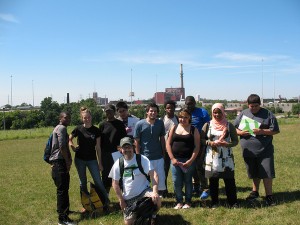Last month I had the great fortune of playing host at Roosevelt’s Chicago Campus to a terrific group of Chicago Public High School kids from the far South Side — the Calumet region, specifically — for a sustainability-themed tour of the university and a little bit of urban nature field-tripping.
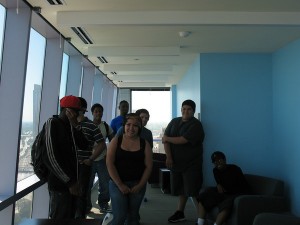
These students are leaders within the noted Calumet Is My Back Yard environmental education program, in which dozens of high school teachers and hundreds of students participate in several ecological/community restoration projects on Chicago’s Far South Side — and in the process, learn about urban ecology, community development, and the history of this industrialized yet still biodiverse landscape. The 12-year-old program is a collaboration between the Field Museum of Natural History and Chicago Public Schools.
Our day started by meeting up at RU’s Wabash Building, then heading up to an 11th floor classroom that features spectacular views of the city’s lakefront. I conducted a simulated college class session on the topic, “Sustainability and Urban Nature: An Introduction to Roosevelt University and Exploration of the Chicago River” (pdf). There was no trouble getting discussion going with this group! We had such a good give-and-take during my talk that I could cover only half of my slides.
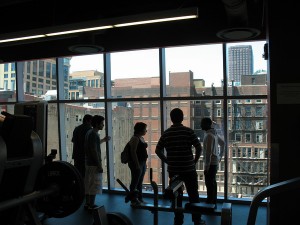
After this session, we enjoyed a student-led tour of the Wabash Building residence hall, fitness center, and other highlights — with a short stop at the Tutoring / Student Support center in the historic Auditorium Building. Then, a tasty lunch at the 2nd floor Dining Center, where I got to visit with several of the students as we munched our hot dish.
To cap off our day, we headed outside with work gloves and trash bags to hop the L and ride the Orange Line to Stearns Quarry, aka Palmisano Park — a relatively new urban parkland on the near SW Side in the Bridgeport neighborhood. A former limestone quarry until the 1970s, and then a landfill until the 2000s, Stearns Quarry Park is now a model of sustainable parkland development, and a great place to talk about land use, the relation between land and water, urban biodiversity, and the history of Chicago.
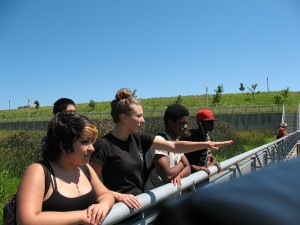
We hiked the park’s extensive trails, chatted and laughed, and collected litter and recycling along the way. I don’t know how many readers have had a chance to do that with boisterous and fun-loving high schoolers, but I can tell you that I thoroughly enjoyed it! The highlight of our visit was when we took in the view at the meadow on the hilltop, which offers great views of the downtown skyline as well as the Fisk Generating Station — a recently shuttered coal-fired power plant which for many decades spewed pollution here on the SW Side until environmental activists succeeded in pressuring Midwest Generation to shut it down.
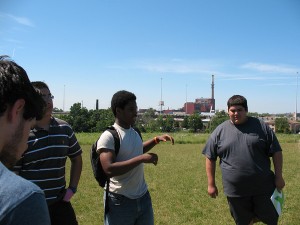
Here, in the shadow of the Fisk plant, two CIMBY students told of the community service work they’ve been doing with key grassroots environmental organizations — the Southeast Environmental Task Force, which is based in Calumet; and the Little Village Environmental Justice Organization, here on the SW Side. These inner-city teens were passionate, articulate, and highly informed — and the impact of what they had to say in just a few minutes didn’t just complement my previous lecture about sustainability and social justice . . . it totally blew it away.
You can check out more photos of our day together here in this online album.
